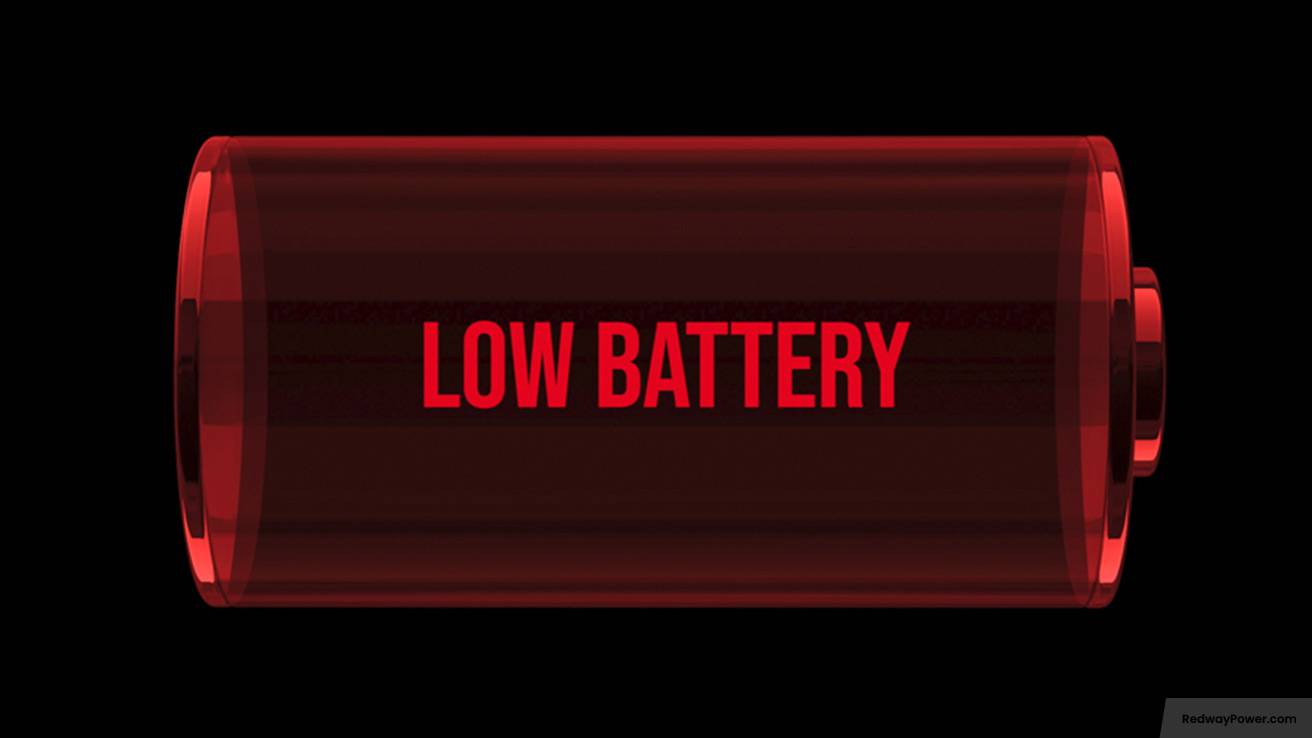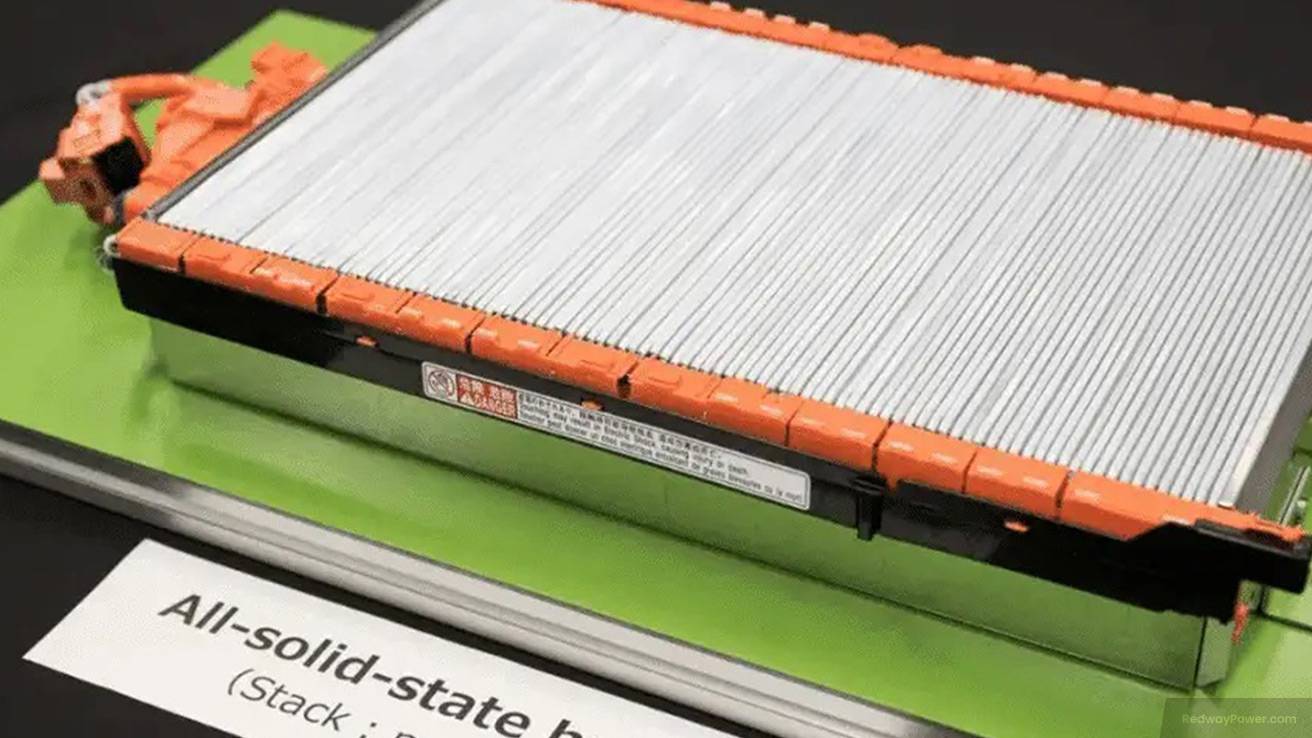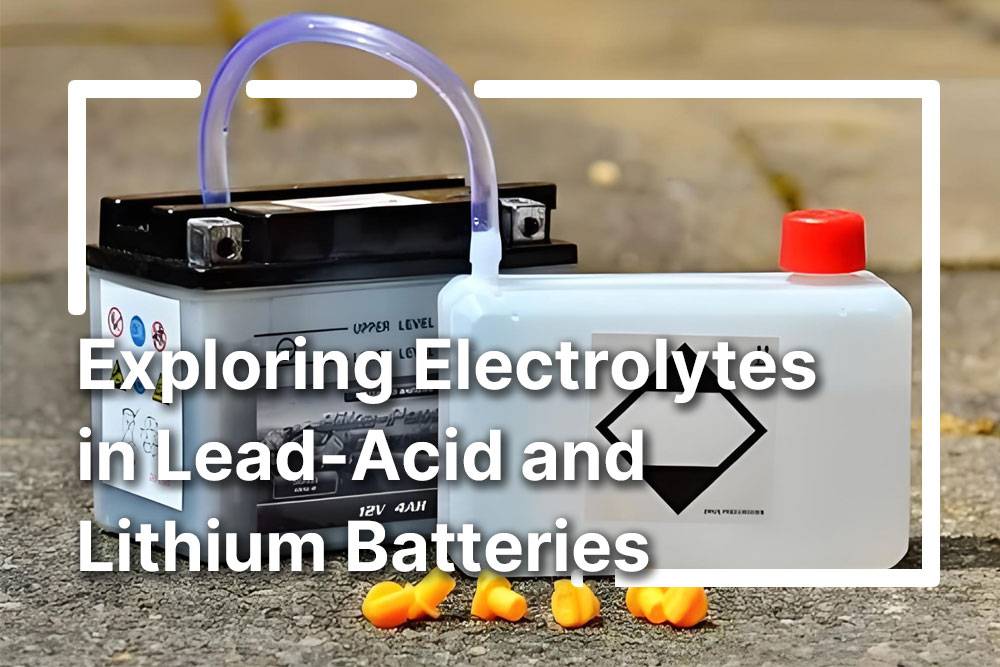Join us as we unravel the mystery behind the seemingly premature demise of lithium batteries. From smartphones to laptops and electric vehicles, these power sources play a crucial role in our tech-driven lives. Delve into the science of battery life and uncover practical tips to prolong their longevity. Grab your device, fully charged, and let’s explore the reasons behind why lithium batteries bid us farewell too soon, turning you into a battery-related expert without needing a PhD!
The Science Behind Battery Life
Ever wondered why your lithium battery loses its charge over time? The science behind battery life reveals the key factors. Let’s explore the workings of these power-packed wonders!

- Chemical Reactions at Play:
- Lithium batteries operate through a chemical reaction between lithium ions and an electrolyte solution. Charging moves ions from positive to negative electrodes, storing energy, and discharging brings them back, generating electricity.
- Structural Changes Over Time:
- Repeated movement of lithium ions causes structural changes within the battery, gradually reducing its capacity to hold a charge effectively – a result similar to wear and tear on well-used items.
- Temperature’s Impact:
- Temperature is crucial; extreme heat or cold accelerates or slows chemical reactions, leading to premature aging and a significant decrease in overall battery performance.
- Charging Habits Matter:
- Overcharging or frequent discharging can impact battery lifespan. Each charging cycle contributes slightly to gradual degradation, emphasizing the importance of mindful charging habits.
Stay tuned for more insights into factors affecting lithium battery life!
Factors that Affect Lithium Battery Life
To maximize the lifespan and performance of your lithium battery, it’s crucial to understand the factors that impact it. Let’s delve into the key considerations for ensuring your battery lasts as long as possible.
- Temperature’s Toll:
- Extreme temperatures, whether hot or cold, can damage internal components, shortening the lifespan of lithium batteries. Avoid exposing them to excessive heat or freezing conditions.
- Usage Patterns Matter:
- Charging and discharging frequency affects overall battery lifespan. Frequent deep discharges strain cells, reducing capacity over time, while shallow discharges with regular recharging maintain optimal battery health.
- Mindful Charging:
- The rate of charging matters; fast charging generates more heat and stress on cells, while slow charging is gentler and helps prolong battery life. Avoid overcharging by unplugging devices once fully charged or using smart chargers.
- Storage Conditions Count:
- Proper storage in moderate conditions is crucial for preserving battery longevity when not in use. Extreme hot or cold environments can accelerate degradation even during periods of inactivity.
- Quality over Savings:
- Using high-quality chargers and genuine batteries is essential. Opting for low-quality or counterfeit options may save money initially but can lead to reduced performance and potential hazards.
Understanding these factors empowers you to care for your lithium battery effectively, ensuring it serves your devices for an extended period.
Signs of a Dying Lithium Battery

Ever wondered why your electronic devices suddenly lose power? Understanding the signs of a dying lithium battery can help you manage your device’s power effectively. Let’s explore these indicators to avoid unexpected disasters.
- Decreased Battery Life:
- If you find yourself charging your device more frequently, it’s a sign of diminished battery capacity – a common indicator that your lithium battery is aging.
- Slow Charging or Difficulty Holding a Charge:
- Difficulty gaining power even after prolonged charging can indicate internal issues within the lithium battery, signaling its decline.
- Physical Changes:
- Swelling or bulging of the battery is a visible sign of a dying lithium battery. Promptly addressing any abnormal changes in size or shape is crucial to prevent further damage.
- Unexpected Shutdowns:
- Unexpected device shutdowns or sudden drops in power level, even with apparent remaining charge percentage, are red flags indicating an aging lithium battery.
Ignoring these signs can lead to more significant problems. Stay tuned for our next blog section where we discuss how to extend the lifespan of lithium batteries and alternative solutions for longer-lasting power.
How to Extend the Lifespan of Your Lithium Battery
To make your lithium battery last longer, follow these simple tips. By avoiding extreme temperatures, optimizing charging habits, keeping your device cool, updating software regularly, reducing screen brightness, adjusting timeout settings, and disabling unnecessary features, you can maximize your battery’s lifespan.
- Temperature Control:
- Keep your lithium battery away from extreme temperatures, as high heat and cold can degrade it faster. Aim to use and store your device in a moderate temperature range.
- Smart Charging Practices:
- Avoid overcharging or fully draining the battery regularly. Opt for regular partial discharges, maintaining the charge level between 20-80%, to reduce unnecessary stress on the battery cells.
- Heat Management:
- Ensure proper ventilation during device usage to combat heat, a significant enemy of lithium batteries. If your device gets hot, take short breaks or remove phone cases that trap excess heat.
- Regular Software Updates:
- Keep your device’s software updated to benefit from optimizations that enhance energy efficiency, contributing to prolonged battery life.
- Adjust Display Settings:
- Conserve battery power by reducing screen brightness and adjusting timeout settings, allowing the display to turn off quickly when not in use.
- Feature Management:
- Disable unnecessary background features, such as Bluetooth or location services, to conserve battery power when not regularly needed.
Remember, while these tips extend battery life, all batteries will naturally deteriorate over time due to wear and tear caused by chemical reactions within their cells.
Alternative Solutions for Longer Lasting Batteries

As our reliance on lithium batteries grows, the quest for longer-lasting power sources becomes crucial. While we can’t change the fundamental nature of lithium batteries, alternative solutions are emerging. Solid-state batteries, graphene-based supercapacitors, and innovative materials like silicon anodes and sulfur cathodes show promise for extended battery life and improved performance. However, these alternatives are still in the research and development stage, and until they become commercially viable, optimizing current lithium batteries by avoiding extreme temperatures and following proper charging guidelines is essential.
- Solid-State Batteries:
- Utilizing solid electrolytes, solid-state batteries offer stability, reduced risk of overheating, and higher energy density compared to traditional lithium-ion batteries.
- Graphene-Based Supercapacitors:
- Graphene-based supercapacitors leverage exceptional electrical conductivity and rapid charging capabilities. They outperform traditional lithium-ion batteries in cycle life and can deliver quick bursts of high-power output.
- Exploring New Materials:
- Researchers are exploring materials like silicon anodes and sulfur cathodes to potentially enhance battery longevity and energy storage capacities even further.
- Current Battery Optimization:
- While awaiting these alternatives, optimizing current lithium batteries is crucial. Avoiding extreme temperatures and adhering to proper charging guidelines, such as avoiding overcharging or fully discharging, can help maximize their lifespan.
FAQs
When should drivers consider getting a battery test done on their vehicles?
Drivers should consider getting a battery test on their vehicles at least twice a year to ensure optimal performance and prevent potential issues. It is recommended to schedule a battery test before the arrival of winter and again before summer to address any seasonal changes that may impact the battery’s functionality. Another suitable approach is to incorporate a battery test as part of routine maintenance, such as during every oil change, to regularly monitor the battery’s condition and address any concerns promptly. By following these guidelines, drivers can maintain their vehicle’s battery health and prevent unexpected failures.
How can a battery test help in maintaining a car battery’s health and lifespan?
A battery test is crucial in maintaining a car battery’s health and prolonging its lifespan. Beyond simply checking the charge level, a battery test can identify underlying issues, assess the battery’s current condition within its lifespan, and provide an estimate of when it might fail. By investing just a few minutes in a battery test, car owners can gain valuable insights into the state of their battery and determine whether it has years of life remaining or is near the end of its useful span. Regular battery tests, ideally before extreme weather seasons or in conjunction with routine maintenance like oil changes, can help prevent unexpected battery failures and preserve the overall health of the vehicle’s electrical system. Prioritizing battery tests as part of a maintenance routine can intercept potential problems and extend the longevity of the car battery.
What can be done to prevent a car battery from dying suddenly?
To prevent a car battery from dying suddenly, it is essential to regularly maintain and monitor its health. One effective method is to have your battery tested by a professional technician at scheduled intervals. This test can help assess the condition of your battery, its remaining lifespan, and provide insights into when it may need to be replaced. Regular testing, ideally before the winter and summer seasons or during routine maintenance like oil changes, allows you to proactively address any potential issues and safeguard against unexpected battery failure. By staying proactive and keeping track of your battery’s health, you can optimize its performance and longevity, minimizing the chances of sudden breakdowns.
How can drivers detect a weak car battery in modern vehicles compared to older models?
In modern vehicles, drivers may have a harder time detecting a weak car battery compared to older models. Back in the 1980s or 1990s, signs of a weak battery were more apparent with symptoms like a slow or sluggish start that would trigger the battery warning light. However, in vehicles from 2010 onwards, the advanced electrical systems and easy-to-start engines make it challenging to notice a weakening battery. Unlike older models where warning lights would indicate a weak battery early on, in newer cars, the battery may continue to degrade without any noticeable signs until it ultimately dies. As a result, drivers of modern vehicles may only become aware of a weak battery after it has completely failed.
How can one extend the lifespan of a car battery?
To effectively prolong the lifespan of a car battery, it is essential to regularly maintain and care for it. Begin by cleaning off any dirt or grime present on the top of the battery case, as this can prevent performance issues. Address corrosion buildup by using a mixture of baking soda and distilled water to thoroughly clean the terminals. Following this, apply a corrosion preventative spray to the clean terminals to protect them from further damage. Consistent care and attention to detail, such as these simple steps, can greatly extend the longevity of your car battery.
What are the signs that a car battery may be weakened or damaged?
Signs that a car battery may be weakened or damaged include the presence of corrosion on the battery terminals. Corrosion builds up on the battery due to heat and grime, which can impede the flow of electricity and cause electrical resistance. This can lead to a decrease in voltage output, resulting in difficulties starting the vehicle or requiring more effort to start it. Another sign of a weakened car battery is a voltage drop, which occurs when corrosion interferes with the electrical flow between the battery terminals. This can cause the battery to deliver less power to the starter, leading to starting issues or a failure to start at all. Additionally, if the battery is not holding a charge properly even after being recharged, it could indicate a power drain problem, signaling that the battery may be weakened or damaged. Regularly cleaning off corrosion and monitoring voltage levels can help diagnose potential issues with a car battery’s health.
How does the increase in onboard electronics affect car batteries?
The increase in onboard electronics significantly affects car batteries by placing a heavier load on them. As more electronics are added to vehicles, the demand for power increases. This demand has led to the requirement for different types of batteries, such as AGM or EFB batteries, to support the modern driving experience. The rise in onboard electronics has tripled from 2009 to 2018, necessitating more robust battery systems to provide sufficient power to the various electronic components even when the car engine is not running.
What are the consequences of leaving a car battery drained for an extended period?
Leaving a car battery drained for an extended period can have detrimental consequences due to the process of sulfation. When a car battery is left without recharging, the lead sulfate formed during normal operation hardens, leading to sulfation. Sulfation toughens the materials in the battery and diminishes the active materials required for proper functioning. This, in turn, creates dead spots within the battery where current cannot pass effectively during recharging. As a result, the battery struggles to provide sufficient power to start the engine, leading to continuous deterioration in performance. Ultimately, if a drained battery is not recharged in a timely manner, it can become permanently damaged, making it increasingly difficult for the battery to supply the necessary power for starting the engine. This prolonged state of depletion can eventually render the battery completely incapable of functioning, resulting in the need for a replacement.
How can one prevent corrosion on a car battery?
To prevent corrosion on a car battery, it is important to regularly clean off any dirt or grime on the top of the battery case. You can use a mixture of baking soda and distilled water to eliminate any built-up corrosion. After cleaning the terminals, applying a corrosion preventative spray can help maintain the cleanliness and prevent further corrosion on the battery terminals. Regular maintenance and proper cleaning techniques can help prolong the life of the car battery and ensure optimal performance.
What role does vibration play in damaging a car battery?
Vibration plays a critical role in damaging a car battery by causing harm to its internal components. The lead plates within a car battery are particularly vulnerable to damage from vibrations. When a car battery is subjected to continuous and intense shaking, the lead plates may become bent or broken loose. These vibrations can cause the lead plates to come into contact with parts they are not supposed to touch, leading to a short circuit. Even smaller vibrations from everyday driving circumstances, such as navigating potholes, rough roads, or speed bumps, can weaken the structure of the lead plates. This weakening can result in the sensitive coating or active lead becoming dislodged, reducing the battery’s ability to hold and deliver electrical power effectively. In essence, vibrations, whether from off-roading, car accidents, or common driving conditions, can contribute significantly to the deterioration and ultimate failure of a car battery.
How does corrosion affect a car battery’s performance?
Corrosion can have a significant impact on a car battery’s performance. When corrosion builds up on the battery terminals, it creates resistance that can impede the flow of electricity. This resistance can lead to voltage drops, affecting the overall function of the battery. In some cases, corrosion can even damage the metal components, such as the clamps that connect the battery to the car, potentially causing a complete loss of electrical connection. To maintain optimal performance and prevent damage, regular cleaning and maintenance of the battery terminals are essential. By keeping the terminals free of dirt and grime, using solutions like baking soda and distilled water to eliminate corrosion, and applying a corrosion preventative spray, you can ensure that your car battery operates efficiently and reliably.
What is sulfation and how does it impact a car battery?
Sulfation is a process where the battery materials become hardened, making them resistant to chemical changes but ultimately leading to the destruction of active materials within the battery. This impedes the flow of current during the recharging process, resulting in areas within the battery that are unable to effectively transfer electricity, known as dead spots. As a consequence, the battery’s lead becomes permanently depleted, reducing the amount of active material available for starting the engine. This diminished capacity causes the car battery to struggle in providing sufficient power, ultimately leading to a situation where the battery may not be able to meet the engine’s power demands, resulting in failure.
How does excessive power usage when the engine is off affect a car battery?
Excessive power usage when a car engine is off, such as charging phones, using electronics, or leaving lights on, can lead to drainage of the car battery. When a battery is left drained for even a short period, it can suffer permanent damage. The process of draining and not recharging the battery properly can cause lead sulfate to harden, a condition known as sulfation. This sulfation toughens the battery components, making it difficult for a proper charge to pass through, eventually leading to dead spots in the battery. As sulfation progresses, the active materials within the battery are destroyed, weakening its ability to hold and deliver power. This results in the battery struggling to start the engine and, ultimately, failing to provide the necessary power, rendering it no longer functional.
What are some signs that my car battery may be failing?
Certainly! Signs that your car battery may be failing include issues with the alternator, starter, or electrical wiring that could be draining the battery. Frequent occurrences such as difficulty starting the car, dimming lights, or warning indicators on the dashboard can also signal a potential battery problem. It is advisable to have a mechanic inspect your vehicle for voltage drops to accurately diagnose any underlying issues related to the battery’s performance.
What are the main reasons a car battery dies?
Car batteries can die due to various reasons such as extreme cold or heat, excessive drainage, corrosion, and vibration. These factors weaken the battery to the extent that it lacks the necessary electrical power to start the engine. Despite appearing robust, car batteries are delicate electrochemical devices affected by disturbances to their electrical and chemical systems. Determining the exact cause of a car battery’s failure typically requires the expertise of a trained automotive technician. In essence, the primary reasons for a car battery’s demise can be attributed to environmental conditions, drainage issues, corrosion, and the impact of vibrations on its functionality.
How can I protect my car battery from cold temperatures?
To protect your car battery from cold temperatures, there are several steps you can take. Firstly, ensure that your battery is fully charged, as a fully charged battery performs better in cold weather. If you live in an area with heavy snow and extremely cold winters, consider investing in a battery blanket. A battery blanket is a heating pad designed to keep your battery warm even in freezing temperatures, which can significantly improve its performance.
Additionally, avoid making only short trips in your car, as these can drain the battery without giving it enough time to recharge fully. It’s important to allow your alternator enough time to recharge the battery properly during longer drives. Regularly maintaining your battery by keeping it charged and in good condition will help protect it from becoming weak and vulnerable in extreme cold.
Remember that a car battery that is drained may freeze solid in cold temperatures, potentially causing irreversible damage. If your battery freezes, do not attempt to jump-start it yourself; seek professional help instead. By keeping your battery fully charged, avoiding short trips, and using a battery blanket when necessary, you can help protect your car battery from the negative effects of cold temperatures.
What factors can cause a car battery to die prematurely?
Several factors can contribute to a car battery dying prematurely. When exposed to extreme temperatures, such as too much cold or heat, car batteries can weaken and lose power. Drainage, either from leaving lights or other electronics on, can also deplete the battery’s charge. Additionally, corrosion on battery terminals can interfere with electrical conductivity and cause early failure. Vibrations from rough roads or improper installation can also impact a battery’s lifespan. It’s important to note that car batteries are susceptible to disruptions in both their electrical and chemical systems, which can lead to premature death. For an accurate diagnosis of battery issues, consulting a trained automotive technician is recommended.
How does heat affect a car battery?
Heat can have a significant impact on a car battery. When exposed to high temperatures, the internal corrosion process in a car battery accelerates, leading to a gradual decrease in its power capacity. Although extreme cold is known to be damaging, excessive heat can be equally detrimental to a car battery. Ideally, car batteries function optimally at around 80 degrees Fahrenheit. However, if the temperature exceeds 90 degrees Fahrenheit, the chemical reactions required to maintain an electrical charge become overly active. This heightened activity can cause the deterioration of the delicate components within the car battery over time. Essentially, while cold temperatures slow down chemical reactions, heat speeds them up. This means that a hot environment can facilitate the production of reactions necessary for starting the car but also contribute to the gradual corrosion of the battery’s power-storing capabilities.
How does cold affect a car battery?
Cold weather has a significant impact on a car battery due to its effect on the battery’s power output. When temperatures drop, the chemical reactions within the battery slow down, leading to a decrease in power. This reduction in power can ultimately result in the battery becoming drained to the point of being unable to start the car engine. Ideally, car batteries operate most efficiently at around 80 degrees Fahrenheit, allowing for optimal performance. The combination of lead plates, electrolyte, and chemical additives within the battery undergo a series of reactions when the ignition is turned on, culminating in the release of electrons that power the starter. In cold conditions, these reactions are hindered, causing the battery to struggle to generate the necessary power to start the engine.
How much longer will my car battery last?
Car batteries typically last between three to five years. However, it’s important to note that various factors can affect the lifespan of a car battery. Issues such as a malfunctioning alternator, a faulty starter, or a broken wire draining the battery can significantly impact how much longer your car battery will last. Regular maintenance and monitoring of your vehicle’s electrical system can help ensure your battery’s longevity. If you suspect any underlying issues, it is essential to have a professional mechanic diagnose and address them promptly to extend the lifespan of your car battery.
How long do car batteries usually last?
Car batteries typically have a lifespan of three to five years, but with proper care, they can last even longer. Ensuring that the battery is kept fully charged and protecting it from factors that can drain its energy can help extend its longevity.
Why did my car battery die?
Your car battery may have died due to various reasons such as extreme temperatures, prolonged use without being recharged, corrosion, or excessive vibrations. Car batteries are complex electrochemical devices that can be affected by disruptions to their electrical and chemical systems. It is essential to have a trained automotive technician diagnose the exact cause of your car battery failure. Common factors that may lead to a car battery dying prematurely include extreme weather conditions, lack of maintenance, electrical system issues, and frequent short trips that don’t allow the battery to fully recharge.













